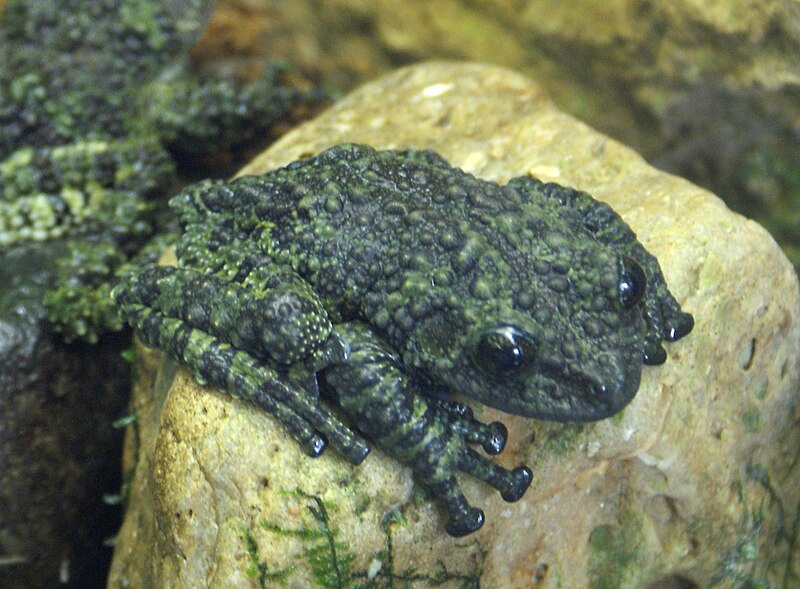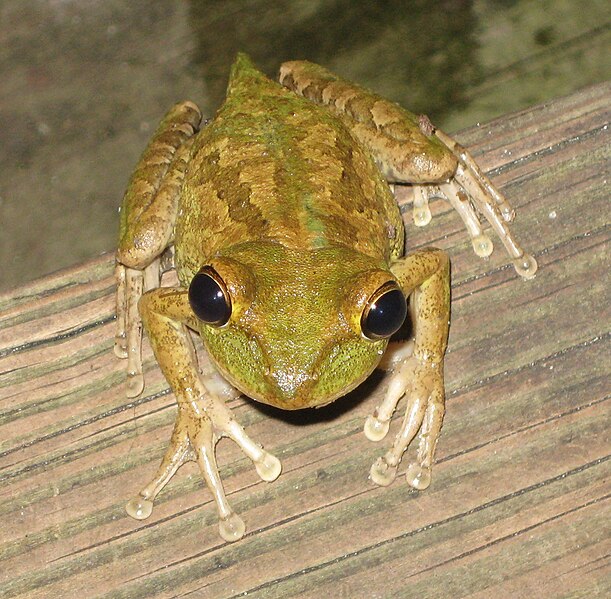 Hello, Frank Indiviglio here. Powdered vitamin and mineral supplements for reptiles and amphibians have been a great boon to herp keepers. However, African Clawed Frogs, Red-Eared Sliders, Axolotls and other creatures that feed only in water present special challenges, as the supplements wash away before being consumed. Today we’ll look at some ways around this problem. Read More »
Hello, Frank Indiviglio here. Powdered vitamin and mineral supplements for reptiles and amphibians have been a great boon to herp keepers. However, African Clawed Frogs, Red-Eared Sliders, Axolotls and other creatures that feed only in water present special challenges, as the supplements wash away before being consumed. Today we’ll look at some ways around this problem. Read More »
Category Archives: Amphibians
Feed SubscriptionThe 10 Best Ways to Prepare for a Career in Herpetology – Part 2
 While pet-keeping suffices for many herp enthusiasts, some with particularly deep interests can only be happy when working with reptiles and amphibians full time. My own path to career in herpetology, while twisted (even “tortuous” at times!), was well worth the struggle…as you can see by the attached photos, I’m very fortunate (please also see this article). In Part 1 I highlighted several important steps one can take to lay the foundation for a career in herpetology. Following are some further thoughts. Read More »
While pet-keeping suffices for many herp enthusiasts, some with particularly deep interests can only be happy when working with reptiles and amphibians full time. My own path to career in herpetology, while twisted (even “tortuous” at times!), was well worth the struggle…as you can see by the attached photos, I’m very fortunate (please also see this article). In Part 1 I highlighted several important steps one can take to lay the foundation for a career in herpetology. Following are some further thoughts. Read More »
The Mossy Treefrog – Notes on Captive Care and Natural History
 This article is one of a series in which I plan to provide a brief introduction to both popular and rarely-kept species. I’ll cover such topics as unique habits, common husbandry concerns and little-known tips, pet pros and cons, and so forth. Detailed care articles will follow…until then, I would enjoy receiving your questions and comments. Today we’ll take a look at the Mossy Treefrog or Tonkin Bug-Eyed Frog, Theloderma corticale.
This article is one of a series in which I plan to provide a brief introduction to both popular and rarely-kept species. I’ll cover such topics as unique habits, common husbandry concerns and little-known tips, pet pros and cons, and so forth. Detailed care articles will follow…until then, I would enjoy receiving your questions and comments. Today we’ll take a look at the Mossy Treefrog or Tonkin Bug-Eyed Frog, Theloderma corticale.
Ultimate Camouflage Artists
Mossy Treefrogs made quite a splash in the zoo world when they began showing up about 10 years ago. I was fortunately able to work with some of the first specimens to arrive here, and was immediately taken in by them. Read More »
Artificial Bromeliads as Poison Frog Breeding Sites – Part 2
 In Part 1 of this article I introduced Hagen’s new Smart Plants, an exciting line of realistic artificial plants (Bromeliads and Scindapsis) that contain small water-holding pools at their bases. When properly positioned in a terrarium, they provide naturalistic sites into which female Poison Frogs can deposit their tadpoles. Today we’ll see how other amphibians and reptiles can make use of this new and much-needed innovation.
In Part 1 of this article I introduced Hagen’s new Smart Plants, an exciting line of realistic artificial plants (Bromeliads and Scindapsis) that contain small water-holding pools at their bases. When properly positioned in a terrarium, they provide naturalistic sites into which female Poison Frogs can deposit their tadpoles. Today we’ll see how other amphibians and reptiles can make use of this new and much-needed innovation.
Arboreal Reptiles
In the wild, most highly arboreal snakes and lizards find all the water they need without ever setting foot or belly on the ground. Captives, especially high-strung or wild caught individuals, may be stressed if forced to do so. Read More »
Herpetological Field Reports – Non-Native Predators and Prey in Florida
 Many interesting amphibian and reptile field research reports are published in professional journals such as Copeia, Herpetologica and Herpetological Review, and are not available on the internet. Unfortunately, such journals are usually quite expensive (if well-worth the price). From time to time I’ll provide summaries of interesting articles that I come across. Today’s report is drawn from Autumn, 2010 publications and covers 2 unusual feeding records. The observations were made in Florida and, as might be expected, both predator and prey (Cuban Treefrog, Spectacled Caiman, Walking Catfish) were non native species! Read More »
Many interesting amphibian and reptile field research reports are published in professional journals such as Copeia, Herpetologica and Herpetological Review, and are not available on the internet. Unfortunately, such journals are usually quite expensive (if well-worth the price). From time to time I’ll provide summaries of interesting articles that I come across. Today’s report is drawn from Autumn, 2010 publications and covers 2 unusual feeding records. The observations were made in Florida and, as might be expected, both predator and prey (Cuban Treefrog, Spectacled Caiman, Walking Catfish) were non native species! Read More »
 That Reptile Blog – Reptile, Amphibian and Exotic Pet Care and Information
That Reptile Blog – Reptile, Amphibian and Exotic Pet Care and Information
